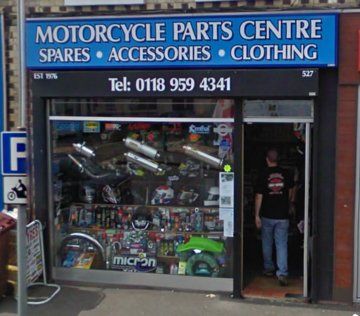Your Go-To Motorbike Shop for Quality Parts and Accessories
Your Go-To Motorbike Shop for Quality Parts and Accessories
Blog Article
Comprehending the Important Parts of a Motorbike: A Comprehensive Overview for Lovers
For motorbike lovers looking to elevate their riding experience and guarantee their bikes run efficiently, comprehending the vital elements of a motorcycle is critical. Each element, from the engine's elaborate operations to the important duty of the braking systems, not just impacts efficiency but likewise safety and security and comfort. This guide will go through the fundamental parts that every cyclist should be familiar with, allowing educated selections in both upkeep and potential upgrades. As we begin this exploration, one must ask: exactly how does each element connect to develop the smooth ride every enthusiast seeks?
Engine Components

The camshaft plays an important role in controlling the timing of the engine's shutoffs, guaranteeing the exact opening and closing essential for reliable fuel and air consumption, as well as exhaust expulsion. This timing is critical to keeping optimal engine efficiency and efficiency. Furthermore, the carburetor or fuel injection system, depending on the motorcycle model, is in charge of blending air with gas in the right proportion for combustion.
The cooling system, either air or liquid-based, functions to keep the engine's temperature level within operational limits, avoiding overheating and guaranteeing longevity - mx gear nz. Each component, meticulously designed and incorporated, contributes to the seamless procedure of the engine, specifying the motorbike's power outcome and general performance
Transmission System
Important to the bike's functionality, the transmission system ensures efficient power transfer from the engine to the wheels. This system makes up several important elements, including the clutch, transmission, and final drive, each playing a vital function in translating the engine's power right into movement. The clutch, commonly run by a hand lever, offers to disengage the engine and involve from the transmission, permitting smooth equipment changes and regulated velocity.
The gearbox, commonly referred to as the transmission appropriate, contains a set of equipments that riders can by hand change with to readjust the bike's rate and torque outcome. These equipments are organized in a series that makes it possible for the motorbike to increase efficiently and maintain ideal engine efficiency across different rates. Most motorbikes use a consecutive gearbox, requiring the motorcyclist to change equipments in an established order.
Braking Systems
While recognizing the transmission system is crucial to utilizing a motorbike's power, just as important is the ability to control and stop that power successfully, which is where stopping systems come right into play. Brakes are crucial for safety and performance, offering the biker with the needed control to browse different terrains and conditions. Usually, motorbikes include two types of braking systems: disc brakes and drum brakes.
Disc brakes are extra common in contemporary motorcycles due to their premium efficiency. This system uses better heat dissipation, regular performance, and enhanced quiting power, particularly in damp problems.
Alternatively, drum brakes, though much less typical, are still located in some bikes. They work by pushing brake shoes versus the inner surface area of a drum connected to the wheel. While generally much less effective in warmth dissipation and stopping power, drum brakes are less complex and much more cost-effective.
Recognizing these braking systems' subtleties allows motorcyclists to maintain their motorbikes effectively and appreciate the design that guarantees secure and effective quiting.
Suspension and Steering
Suspension and steering systems are essential components that significantly influence a bike's handling and trip convenience. The suspension system, being composed of forks at the front and shock absorbers at the back, absorbs roadway abnormalities, enhancing stability and control. Front forks, commonly telescopic or inverted, compress and rebound to reduce influences, while rear shock absorbers preserve tire contact with the road, critical for traction and safety.
Steering, focused around the handlebars, attaches the cyclist to the motorcycle's directional control. The guiding head bearings make sure smooth procedure, allowing accurate maneuverability. Appropriate placement and upkeep of these bearings are crucial for foreseeable guiding feedback and lowering rider tiredness.
The suspension's adjustability is an additional critical facet; preload, damping, and rebound settings allow personalization to fit numerous riding designs and problems. This flexibility is essential for optimizing efficiency, whether browsing metropolitan streets or dealing with rugged trails. Innovations like see this website digital shock absorber use real-time changes, improving trip high quality across diverse surfaces.

Electrical Equipments
After ensuring a smooth and controlled experience with efficient suspension and guiding systems, attention transforms to the electric systems, a critical facet of modern motorbikes. These systems play a crucial function not just in beginning the engine but likewise in powering different parts that enhance the performance and safety and security of the motorcycle.
At the heart of a motorbike's electric system is the battery, which shops electrical power essential for starting the engine and powering auxiliary systems - moto parts nz. The alternator or generator, combined with the rectifier-regulator, makes sure the battery continues to be billed while the motorcycle is in operation, converting mechanical power right into electric power and keeping voltage degrees
The ignition system, an additional critical component, is responsible for sparking the air-fuel blend in the engine's cylinders. Modern motorbikes commonly use a digital ignition system, using higher effectiveness and dependability compared to conventional systems.
Lighting systems, including fronts lights, tail lights, and indications, are additionally essential, making certain visibility and safety for the rider. Added digital components such as sensors, control units, and presents add to sophisticated functions like gas shot read the article monitoring, anti-lock stopping systems (ABS), and digital dashboards, additionally enhancing the riding experience.
Conclusion
An extensive understanding of a bike's vital parts, including the engine, transmission system, braking systems, suspension, guiding, and electrical systems, is crucial for enthusiasts intending to enhance comfort, performance, and safety and security. Mastery of these components enables educated decisions concerning maintenance and upgrades, inevitably enhancing the riding experience. By integrating this knowledge, riders can guarantee their motorcycles operate at peak effectiveness and dependability, therefore optimizing both pleasure and long life of their vehicles.
For bike enthusiasts looking to boost their riding experience and guarantee their bikes run smoothly, understanding the crucial elements of a bike is extremely important.Integral to the bike's capability, the transmission system makes certain reliable power transfer from the engine to the wheels.While understanding the transmission system is key to taking advantage of a bike's power, equally important is the capacity to regulate and quit that power properly, which is where stopping devices come into play. Typically, bikes include 2 types of stopping systems: disc brakes top helmet and drum brakes.
A complete comprehension of a bike's important parts, including the engine, transmission system, braking devices, suspension, guiding, and electric systems, is crucial for enthusiasts intending to enhance comfort, efficiency, and security.
Report this page